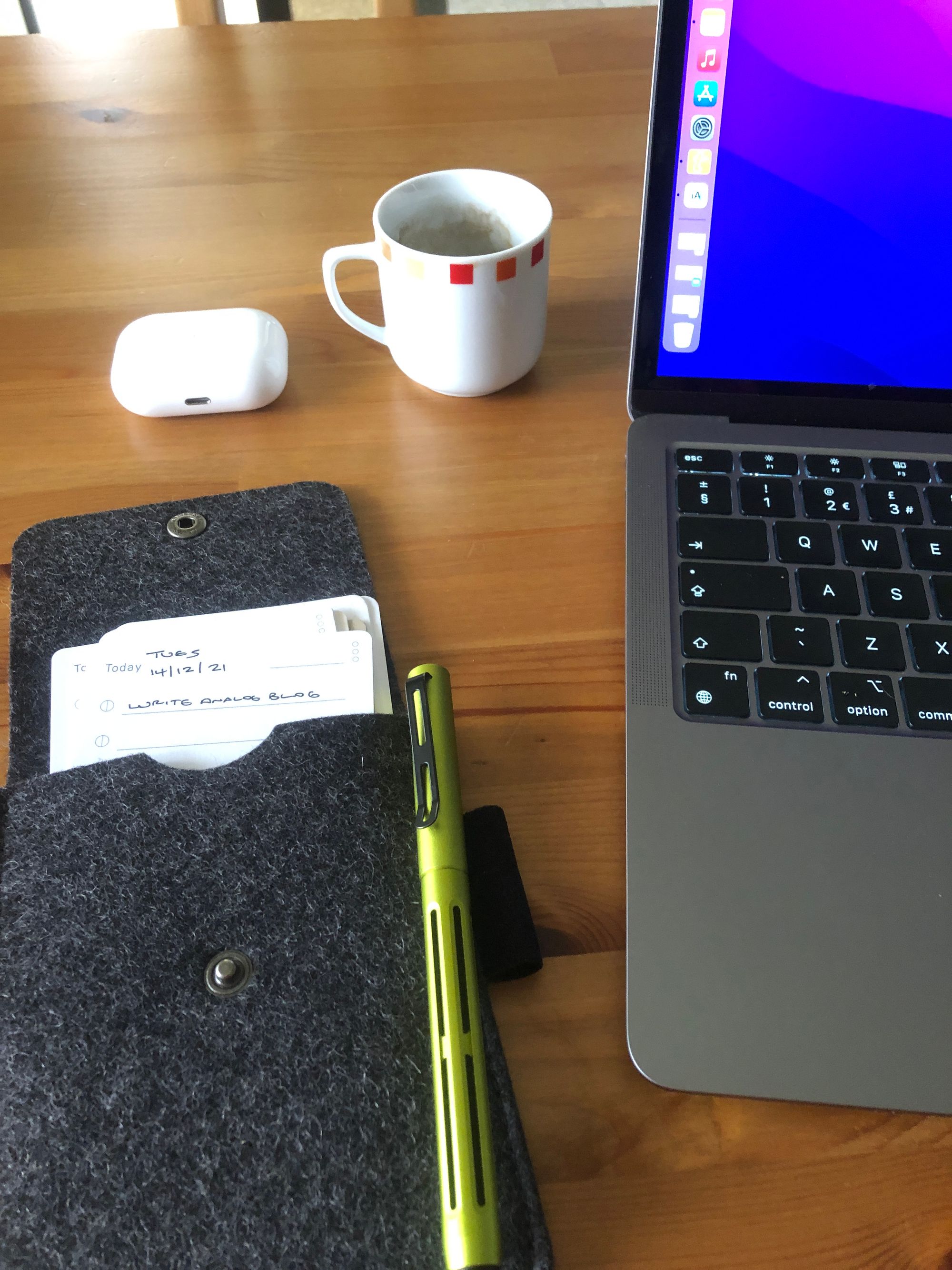Do you know Take Note? It's a podcast and blog. Hosted by Adam and Ted, and sometimes Ryan, number one fan and occasional co-host. Have a listen. It's fun.
On episode 138, the Gents touched back on a perennial subject, the index card. On 1857, I recently called "every day carry" (#edc) "catnip for the internet". Don't believe me? Add the hashtag to your next Instagram post.
Anyway - if edc is the gateway drug, then index cards are the hard stuff. There's a special corner of the stationery world with an almost inexplicable attachment to the index card.
The guys were marvelling at the success of "analog", a Kickstarter project for guided index cards that raised $450,000. It's probably fair to say that neither Adam nor Ted backed the project, I mean, it's index cards in a box.
I did.
I backed it, have since gone back and ordered refills, and I recommend the product most weeks on Stationery Adjacent. It frequently features in "Tool of the Week" in the podcast, because I find it so helpful.
To be clear, Adam and Ted are right. It's an index card for heaven's sake! How much help can I need with an index card?
System
There are three types of card in the system. "Today", "Next" and "Someday". Each is a different shade. The cards consist of 10 bullets (an unfilled circle with a vertical line through the middle) on one side and dot grid on the back. The box (which is lovely, by the way) has a slot to place a card, meaning that the card sits next to my monitor, reminding me what I intended to be doing. #edc fans need not panic, we analogers have a mobile solution too. Yes, the makers, Ugmonk, have provided us with a felt pouch, so we need never be without our beloved cards.
Here's me, in road warrior mode. (Actually, I'm in my kitchen, but hey, there's a pandemic going on, work with me.)

Yes, I could now recreate the cards, hell, I might even be able to improve them a little. With a plain card, I could design my own bespoke card, distinct and perfect for each and every day. But I wouldn't.
Usage
Either when I close down the day (I often neglect this practice), or when I sit down at my desk in the morning, I start a "Today" card. I write on any appointments. Then, I write 1,2 or 3 tasks that I want to achieve in my "Green" time - that's to say the morning. I may add a few admin tasks too - for later in the day, when my creative energy has waned. That's it. My day planned. It's always on - next to my monitor or at my side. An ever-present reminder of my intention. I know, rocket science, isn't it?
"Next" - these cards operate in theory, as capture points for a fleeting thought or idea; and sometimes they do. Mostly though, I end up with a lot of blank next cards.
"Someday" - as you may have gathered, the analog system borrows heavily from Get Things Done methodology. Someday/Maybe never chimed with me in GTD, nor does it Analog. However, friend and Stationery Adjacent co-host Justin uses his someday cards to set his intention for a week, or a fortnight. I saw that and instantly stole it.
That's it. There is no more.
At the end of the day - I check the card. Have I filled every circle (the equivalent of a tick)? If not - do I want to carry the task over to a card for the following day? Or put it on a Next card? Or simply ignore it? I decide, and then tear up the card.
No archive. No baggage. A minimalist task management system. Now - I'd be lying if I said that Analog handles ALL my task management - but it's the only system I touch daily.
Question
Writing this post has made me ask myself the question - could I switch to Analog entirely? Hmmm...
My writing is supported by people like you. You can become a member of the site here. Members access the serialisation of my first novel draft, and give comments to me in a member's Slack. They also get a free electronic copy of anything that I publish during their membership. Sign up - help me move writing from a side-project to a main project.